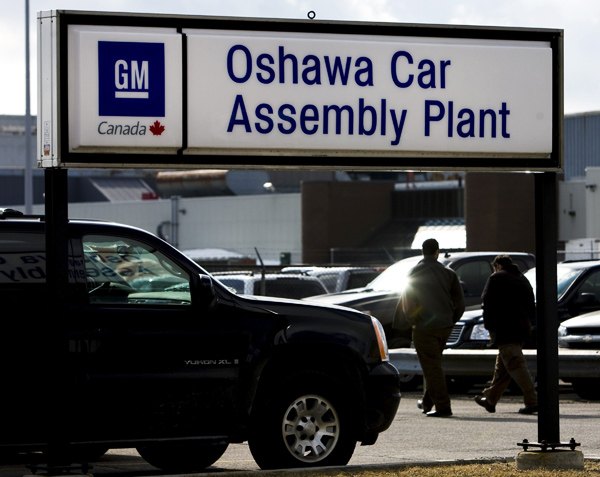General Motors Canada Pension Plan Faces $2.2 Billion Deficit
Even after Canadian taxpayers contributed $3.2 billion (Canadian) to General Motors’ pension fund after GM’s bankruptcy proceedings in 2009, the company’s pension fund for unionized employees is still short $2.2 billion – a fair amount for a plan that’s responsible for 30,000 employees.
The pension plan deficit was a key factor in GM’s pitch to the Ontario and Canadian federal governments when asking for bailout funds. Canadian taxpayers ended up providing $10.6 billion out of the $60 billion bailout package. Before we get to cries of “Government Motors” and “picking winners”, the problem appears to be deeper than just GM’s own finances. Pension plans are a big players in Canada’s finance scene (the Ontario Teacher’s Pension Plan and the Canada Pension Plan are among the juggernauts) but lately, low interest rates and increasing lifespan have hampered the returns delivered by pension funds.
The deficit was calculated by an actuary commissioned by the Canadian Auto Workers Union. Based on the value of the plan’s assets and liabilities if it were to be wound down during the date of calculation. Benefits for workers, retirees and surviving spouses would have been slashed by over 33 percent. To make matters worse, GM has seen the number of active workers fall as its number of retirees collecting benefits has risen, a ratio that will only increase in the future.
This trend is not confined solely to GM. Companies like Air Canada and Canadian Pacific Railway are facing similar issues relating to worker/retiree ratios, and GM’s story is indicative of another disturbing precedent – that the public may be forced to foot the bill for a bankrupt corporation’s weak pension plan, whether directly or through the government administered Ontario Pension Benefits Guarantee Fund. GM and the CAW are due to start labor negotiations this summer – look for the issue of pensions to be a major one.
More by Derek Kreindler
Latest Car Reviews
Read moreLatest Product Reviews
Read moreRecent Comments
- Cprescott Doesn't any better in red than it did in white. Looks like an even uglier Honduh Civic 2 door with a hideous front end (and that is saying something about a Honduh).
- Kwik_Shift_Pro4X Nice look, but too short.
- EBFlex Considering Ford assured us the fake lightning was profitable at under $40k, I’d imagine these new EVs will start at $20k.
- Fahrvergnugen cannot remember the last time i cared about a new bmw.
- Analoggrotto More useless articles.


































Comments
Join the conversation
Bailout part two? It is tiring to hear this over and over. GM, The Post Office and State gov'ts all crying that their pension plans are underfunded. When does this BS end? We certainly cannot live this way, how the hell can they.. repeatedly?
There are usually two problems with "under-funded" pension plans. Problem #1 is that the employer didn't put enough money in the plan in the first place (this is the problem which affects many U.S. state and local governments). Problem #2 is that return on pension investments are below expectations. Either way, actuaries continuously re-calculate the amount of assets needed to pay the promised pensions to retirees, based on both what is promised to those retirees, and projected future returns. When any of these get out of whack, then the plan is said to be "underfunded." IIRC, in the U.S. private employers are required to remedy underfunding of pension plans. Sadly, public employers are not. So, what you have is politicians promising rich retirement benefits without being required to tell the voters the cost of paying for them. With increased job mobility, the whole premise of pension plans -- lifetime employment with one employer -- is crumbling. (Although union pension plans are an exception to that, so long as the worker continues doing union work.) The sad thing is that, in the U.S. at least, various tax-deferred self-funded retirement plans are woefully inadequate. If a U.S. worker contributes the maximum to a 401(k) plan and his employer matches it, the resulting accumulation of wealth will not fund any kind of a decent retirement. So, people who want a retirement equal to the kind provided by old-style pensions, have to fund it using a substantial amount of after-tax money. Think about this: the recommended withdrawal rate from a retirement "nest egg" is 4 percent. At that rate, you can be confident that you won't run out of money before you die. So, using those numbers, funding a $40,000 pension takes a $1M "nest egg." You can do a little better by purchasing an annuity, but that leaves nothing for your heirs.